
-
 India faces world football ban for second time in three years
India faces world football ban for second time in three years
-
Globetrotter Herzog to get special Venice award

-
 'Old things work': Argentines giving new life to e-waste
'Old things work': Argentines giving new life to e-waste
-
Showtime for Venice Film Festival, with monsters, aliens, Clooney and Roberts
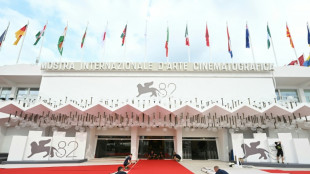
-
 Thai woman jailed for 43 years for lese-majeste freed
Thai woman jailed for 43 years for lese-majeste freed
-
What is swatting? Shooting hoaxes target campuses across US

-
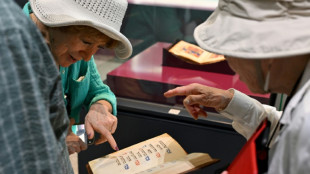 Row over Bosnia's Jewish treasure raising funds for Gaza
Row over Bosnia's Jewish treasure raising funds for Gaza
-
Police search Australian bush for gunman after two officers killed

-
 NZ rugby player who suffered multiple concussions dies aged 39
NZ rugby player who suffered multiple concussions dies aged 39
-
Former Australian Rules player comes out as bisexual in first

-
 French, German, Polish leaders to visit Moldova in show of force in face of Russia
French, German, Polish leaders to visit Moldova in show of force in face of Russia
-
US tariffs on Indian goods double to 50% over Russian oil purchases

-
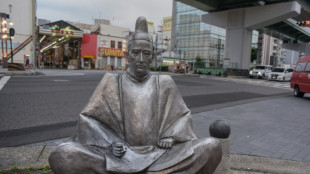 Feudal warlord statue beheaded in Japan
Feudal warlord statue beheaded in Japan
-
Tokyo logs record 10 days of 35C or more

-
 Sinner, Swiatek romp through at US Open as Gauff struggles
Sinner, Swiatek romp through at US Open as Gauff struggles
-
Brazil to face South Korea, Japan in World Cup build-up

-
 Asian markets diverge with eyes on Nvidia earnings
Asian markets diverge with eyes on Nvidia earnings
-
Osaka out to recapture sparkle at US Open

-
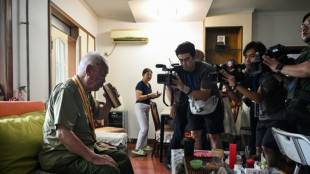 China's rulers push party role before WWII anniversary
China's rulers push party role before WWII anniversary
-
Pakistan's monsoon misery: nature's fury, man's mistake

-
 SpaceX answers critics with successful Starship test flight
SpaceX answers critics with successful Starship test flight
-
Nightlife falls silent as Ecuador's narco gangs take charge
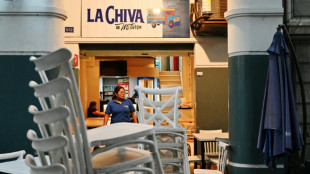
-
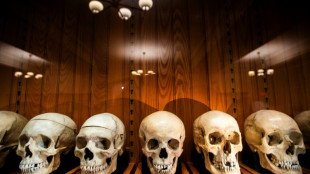 Unnamed skeletons? US museum at center of ethical debate
Unnamed skeletons? US museum at center of ethical debate
-
France returns skull of beheaded king to Madagascar
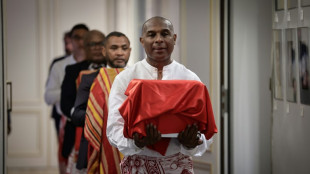
-
 SpaceX's Starship megarocket launches on latest test flight
SpaceX's Starship megarocket launches on latest test flight
-
Apex Makes Significant Niobium Discovery with 0.59% Nb2O5 over 36 m, including 1.08% Nb2O5 over 10 m at The Cap Project

-
 FINOS Welcomes New Governing Board Leadership and Global Industry Members to Accelerate Innovation Through Open Collaborations on Cloud Compliance, AI Governance, and Industry Interoperability
FINOS Welcomes New Governing Board Leadership and Global Industry Members to Accelerate Innovation Through Open Collaborations on Cloud Compliance, AI Governance, and Industry Interoperability
-
Alset AI Welcomes Lisa Baird and Vijay Mony to the Board of Directors, Reports Results of Annual and Special Meeting of Shareholders

-
 US restaurant chain Cracker Barrel cracks, revives old logo
US restaurant chain Cracker Barrel cracks, revives old logo
-
Brazil's Bolsonaro placed under 24-hour watch ahead of coup trial verdict

-
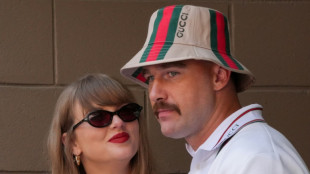 Taylor-Travis love story: 5 things to know
Taylor-Travis love story: 5 things to know
-
Sports world congratulates Swift and Kelce on engagement

-
 Wolves inflict more woe on West Ham, Leeds crash out League Cup
Wolves inflict more woe on West Ham, Leeds crash out League Cup
-
Venezuela deploys warships, drones as US destroyers draw near

-
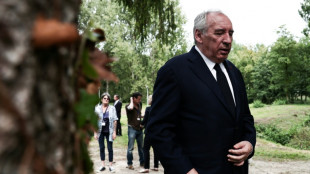 French political turmoil sends European stocks down, Wall Street edges up
French political turmoil sends European stocks down, Wall Street edges up
-
Sinner, Swiatek romp through at US Open

-
 Meta to back pro-AI candidates in California
Meta to back pro-AI candidates in California
-
Yankees-Giants set for earliest US MLB opener in 2026 schedule

-
 Messi will be game-day decision for Miami in Leagues Cup semis
Messi will be game-day decision for Miami in Leagues Cup semis
-
'Swiftie' Swiatek swats Arango, talks Taylor & Travis engagement

-
 New era: Taylor Swift and Travis Kelce announce engagement
New era: Taylor Swift and Travis Kelce announce engagement
-
SpaceX set once more for Starship test flight

-
 Sinner begins US Open defence with quick win
Sinner begins US Open defence with quick win
-
Who is Lisa Cook, the Fed governor Trump seeks to fire?

-
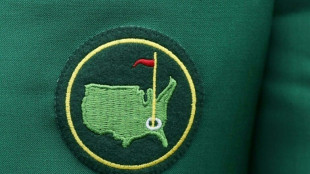 Masters updates qualifying criteria to add six national opens
Masters updates qualifying criteria to add six national opens
-
New era unlocked: Taylor Swift and Travis Kelce announce engagement

-
 Israeli protesters demand hostage deal as cabinet meets
Israeli protesters demand hostage deal as cabinet meets
-
Trump to seek death penalty for murders in US capital

-
 Taylor Swift and Travis Kelce announce engagement
Taylor Swift and Travis Kelce announce engagement
-
Swiatek swats Arango, Sinner launches US Open defence


Rome museum gives stolen artefacts their due
Antiquities recovered after being looted in Italy and sold on the global black market have found their sanctuary in the heart of Rome.
The "Museum for Rescued Art" is housed in a spectacular hall within the majestic Diocletian Baths, ancient Rome's largest bath complex.
Currently holding dozens of amphorae, coins and busts, the museum stages rotating exhibits aimed not just at showcasing the art, but recounting how it was rescued.
Some of the antiquities were looted during illegal excavations of Etruscan necropolises north of Rome or from secret digs in the southern region of Puglia.
Many were smuggled out of Italy via a network of antique dealers and sold to foreign collectors.
Some of the objects highlighted were "resold or donated to major American museums" in the past, said museum director Stephane Verger, a French archaeologist.
Italy has waged legal and diplomatic battles lasting years as it seeks to recover its stolen artworks and plundered archaeological artefacts.
Two years ago it scored a major success.
The prestigious Getty Museum in Los Angeles agreed to return to Italy a group of three life-size terracotta statues known as "Orpheus and the Sirens" dating from the fourth century B.C., acknowledging they had been illegally excavated.
They, too, made their way to the Museum for Rescued Art, part of a thematic exhibit on Italian terracotta.
"We don't want to be like those big museums and simply show beautiful works," Verger told AFP.
"It is an educational museum which shows all the dangers of international trafficking."
But the works do not stay here.
"After being exhibited for some time, they are repatriated to other Italian museums", Verger said -- precisely where they should have been all along had they not been smuggled out of the country.
- Grave robbers -
Illegal excavations, such as when ancient burial sites are targeted by "tombaroli", or grave robbers, are damaging in two key ways.
Archaeologists are deprived of the looted objects themselves, but also key information on how, where and when they were found.
"Clandestine excavations have a very negative impact on our knowledge of ancient cultures," Verger said.
He added: "These days in archaeological work, context is about half the scientific value of the work."
The museum, which opened two years ago, is temporarily closed due to construction works ahead of the 2025 Jubilee Year, in which millions of Catholic pilgrims are expected to visit Rome.
But when it re-opens, could it welcome "The Athlete of Fano", a splendid ancient Greek statue in bronze that has been at the Getty for nearly 50 years?
The European Court of Human Rights ruled earlier this month in favour of Italy's request to take back the statue, known in the United States as "Victorious Youth".
But Getty contests the decision and the case could be referred to the court's Grand Chamber for further examination.
Discovered 60 years ago by Italian fishermen off the Adriatic coast of Fano in central Italy, the statue is believed to have been immediately sold, changing hands several times before resurfacing on the art market in 1974.
The statue, which depicts a nude athlete with a wreath atop his head, was acquired from a German dealer by the J. Paul Getty Museum for nearly $4 million.
As to whether the athlete will make a stopover to Rome's museum, Verger said that "nothing is certain".
O.Norris--AMWN